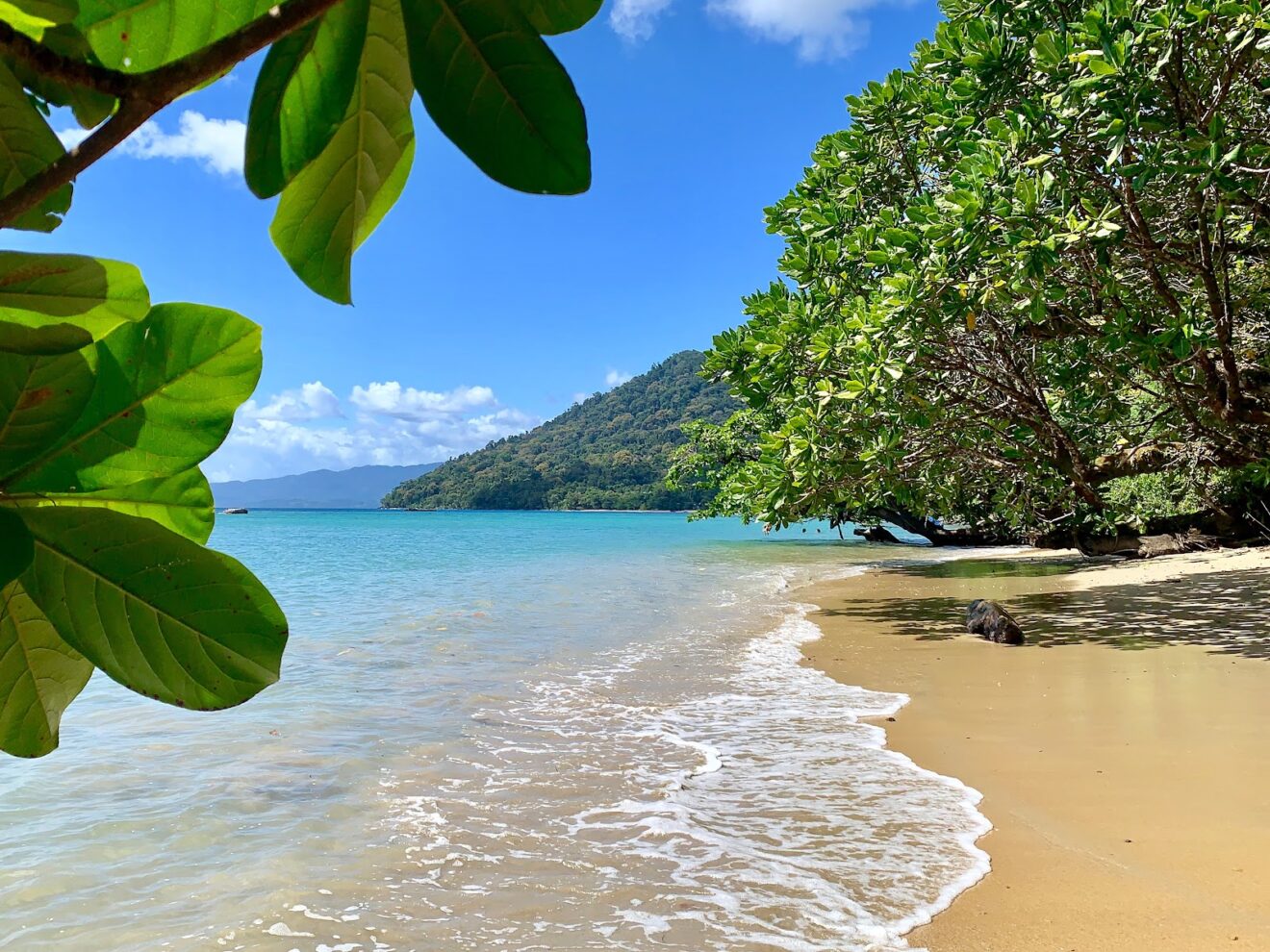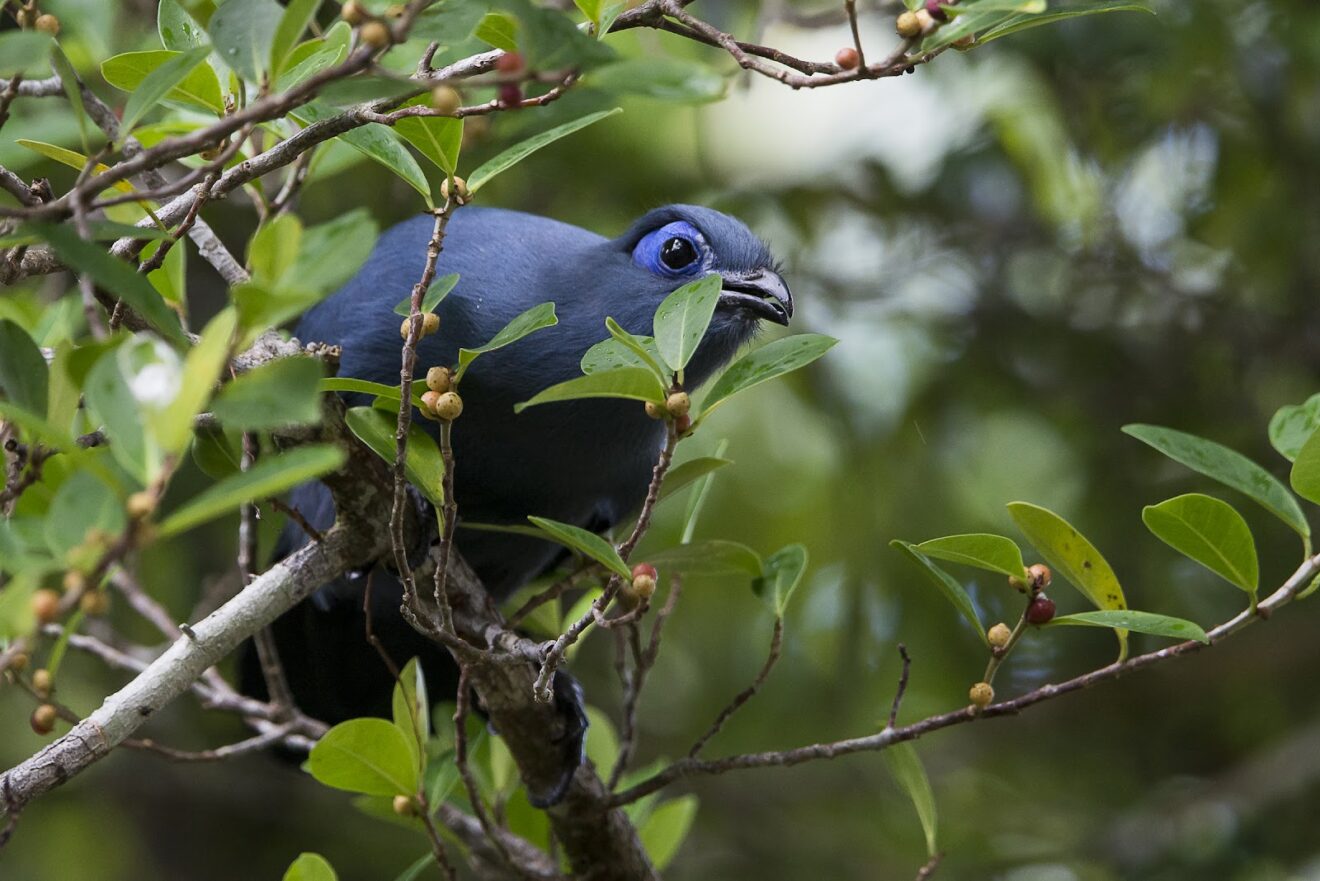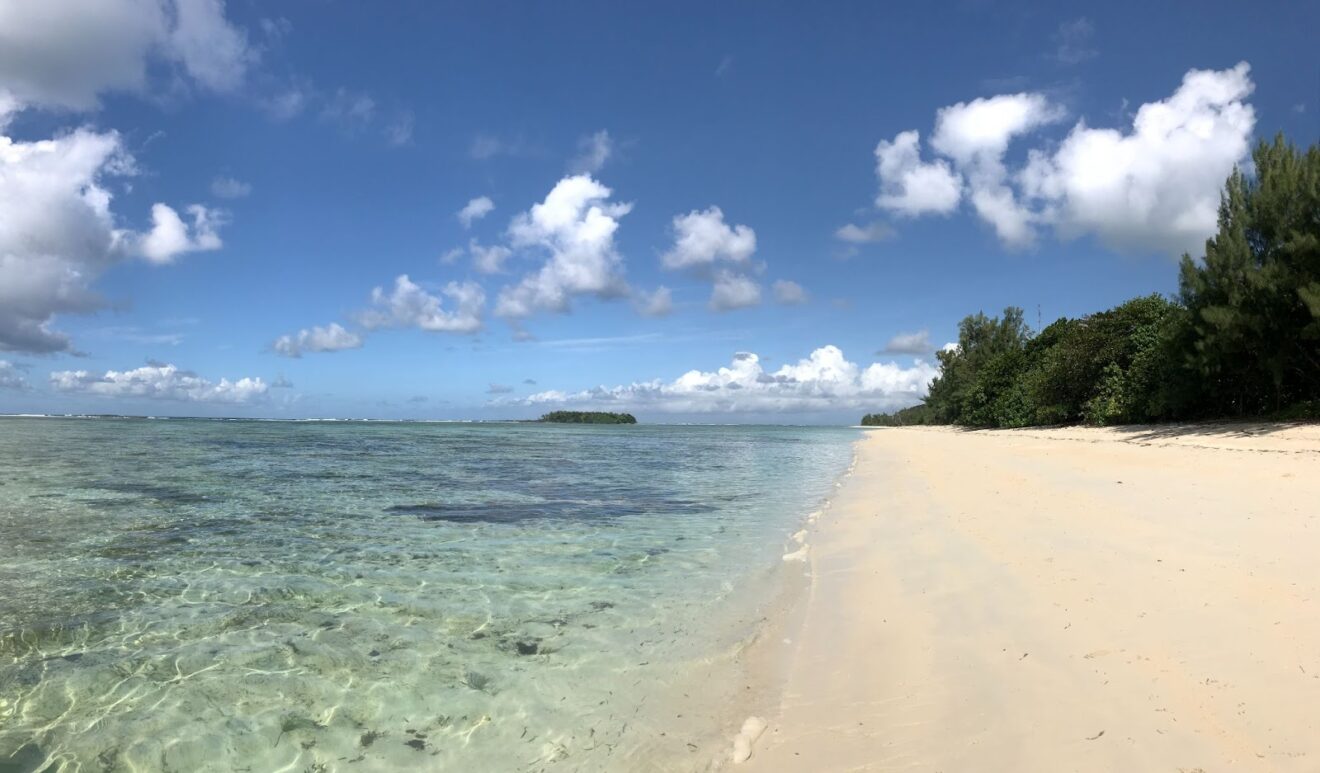
A visit to Masoala National Park is still very much an adventure, a visit to one of the most untouched places on earth. The best starting point for any Masoala expedition is Maroantsetra, a small town at the head of Antongil Bay with some decent hotels at a variety of prices. From Maroantsetra you can also do a day trip to Nosy Mangabe, an island reserve with excellent aye-aye spotting. The west coast is the perfect base camp for snorkeling in the Tampolo marine parks or to hike in the national park.
As this is a rainforest area, rain is possible every day, although the period from mid September to early December is normally drier than the rest of the year. The cyclone season runs from late December to the beginning of May. July and August are the months for whale-watching, when humpbacks migrate from Antarctica to mate and give birth to their young in Antongil Bay.
The peninsula can also be explored from the east, from the town of Antalaha, vanilla and administrative capital of the region. About 50 km south lies Cap Est, the easternmost point of Madagascar, with its gorgeous sandy beaches and extensive offshore reefs. Cap Est is a good starting point for treks into the national park (e.g. to the great Bevontsira Waterfall) or across to Maroantsetra. Such trips are unforgettable experiences, but are for the physically fit only and may take a week or more depending on weather conditions.
Tourism infrastructure in Madagascar, and particularly at Masoala, is still under development. A visit to Masoala cannot be rushed: it requires time and interest in local people and their culture. Visitors always receive a warm welcome and are guaranteed a memorable experience of the region and its wildlife. Air Madagascar flies to both Maroantsetra and Antalaha from the capital, Antananarivo.
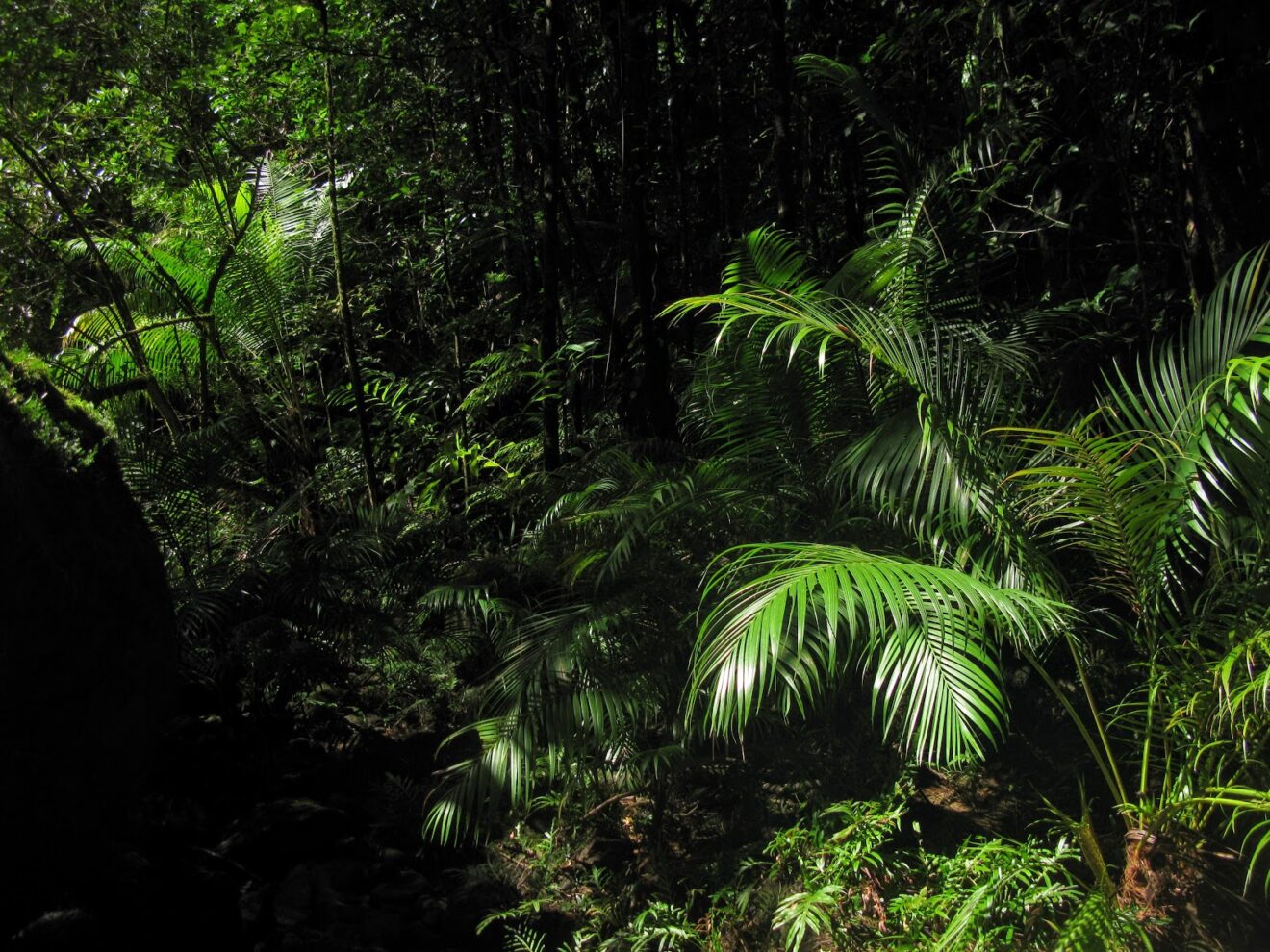
The Masoala peninsula has the largest remaining area of lowland rainforest in Madagascar, which extends right down to the shore in places. The total area of the peninsula exceeds 400,000 ha with the park occupying some 230,000 of largely primary forest on the western side. Masoala has arguably the greatest biodiversity in all of Madagascar and efforts to conserve it against the encroachment of agriculture and logging are of vital importance. Fortunately several conservation bodies are active in the region. The national park includes some marine reserves.
The canopy height is around 30 m and there are few emergent trees. The understorey is characterized by abundant palms, tree ferns and numerous epiphytes and orchids. The slopes are often very steep, with many clear, fast-flowing streams and small rivers. This is the wettest part of Madagascar with annual rainfall averages of 5.000 – 6.000 mm and there is no distinct dry season.
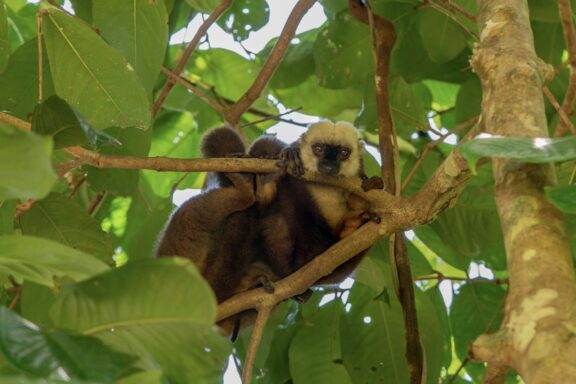
Masoala has many unique mammals such as the red ruffed lemur (locally endemic), white-fronted brown lemur, eastern wooly lemur, eastern fork-marked lemur, aye-aye, mouse lemur, Malagasy striped civet, falanouc, eastern ring-tailed mongoose, lowland red forest rate, greater hedgehog tenrec and lowland streaked tenrec.
There are also at least 93 bird species in Masoala. Much sought after, but very difficult to see, are the Madagascar serpent eagle, Madagascar red owl and Bernier’s vanga. Regularly seen are the helmet vanga, nuthatch vanga, red-breasted coua, scaly ground-roller, short-legged ground-roller, Madagascar wood rail and velvet asity.
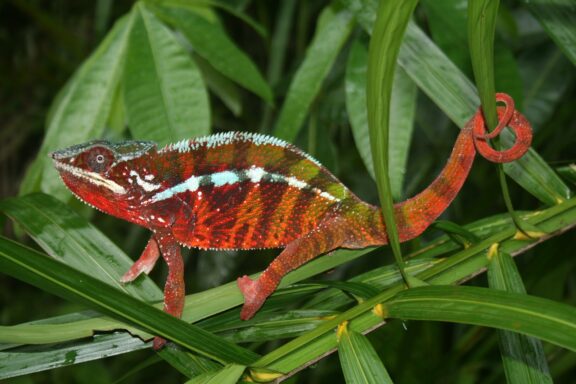
There are also many interesting reptiles and frogs to be found in Madagascar. There are various chameleons including the panther chameleon, Boettger’s chameleon, stump-tailed chameleons, leaf-tailed geckos, day geckos, tomato frot and green-backed mantella. .
The peninsula lies to the east of Maroantsetra and forms the eastern coastline of Antongil Bay. It is accessible most easily by boat (2 – 3h from Maroantsetra). The best areas of forest (especially red ruffed lemurs) are near Lohatrozona, Andranobe and Tampolo, where there are two lodges of which Masoala Forest Lodge is the best to stay at. These areas have good trail systems, which are difficult and steep in parts. Potentially wet throughout the year, but dry spells are possible anytime. The best months to visit are September to December. A visit of at least three nights is recommended for this wonderful area, but we highly recommend a full week in Masoala.

